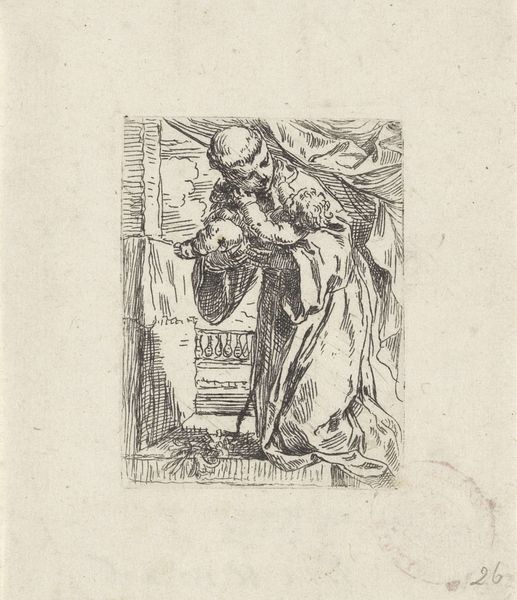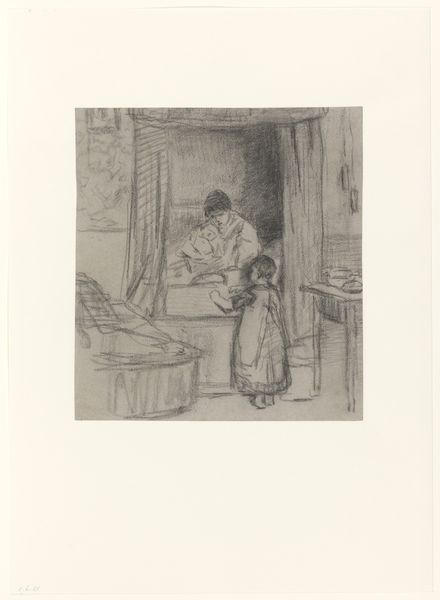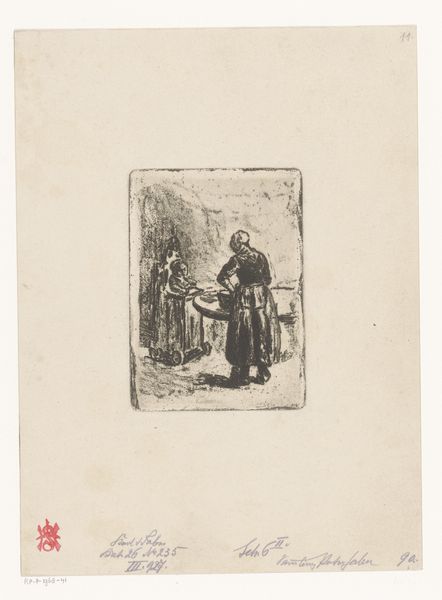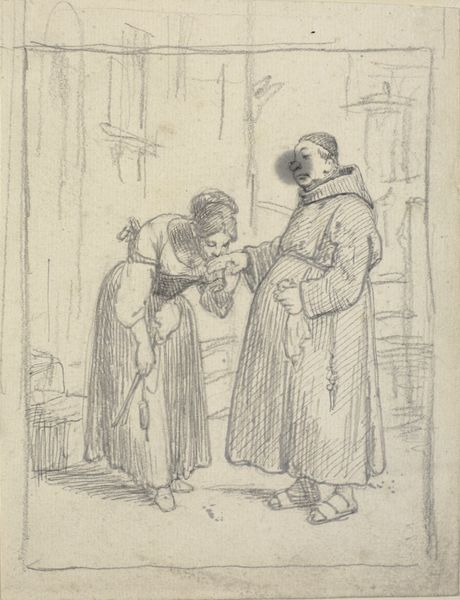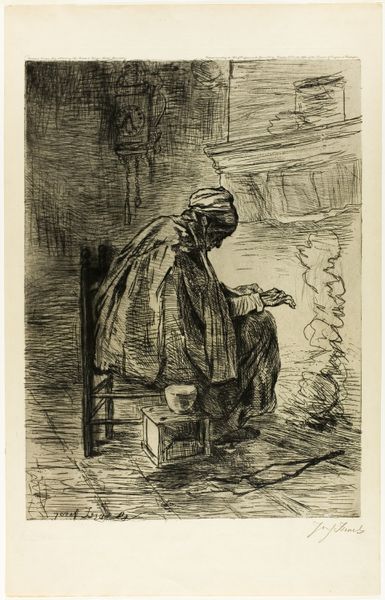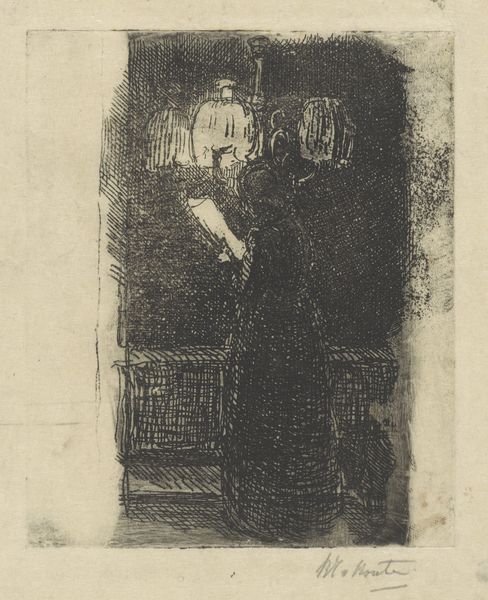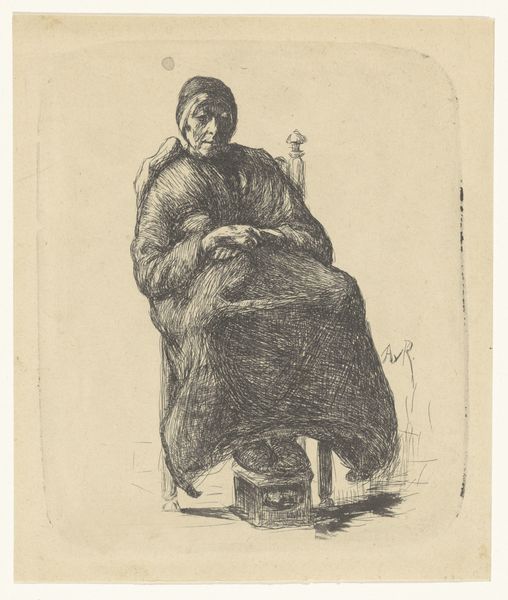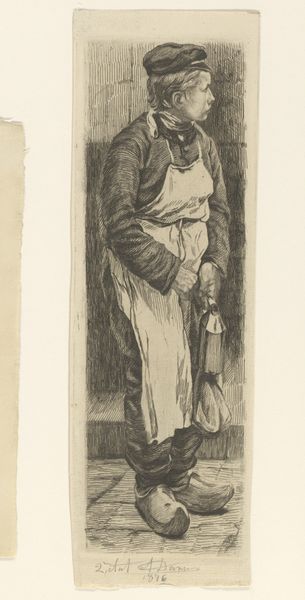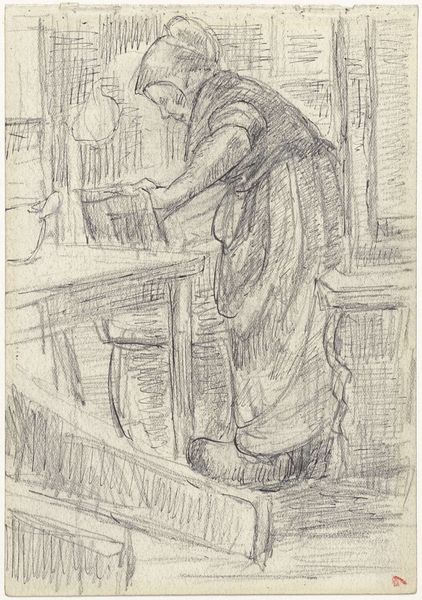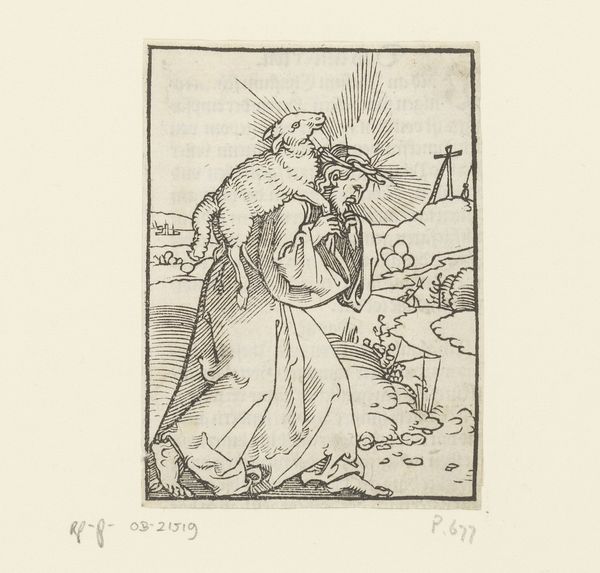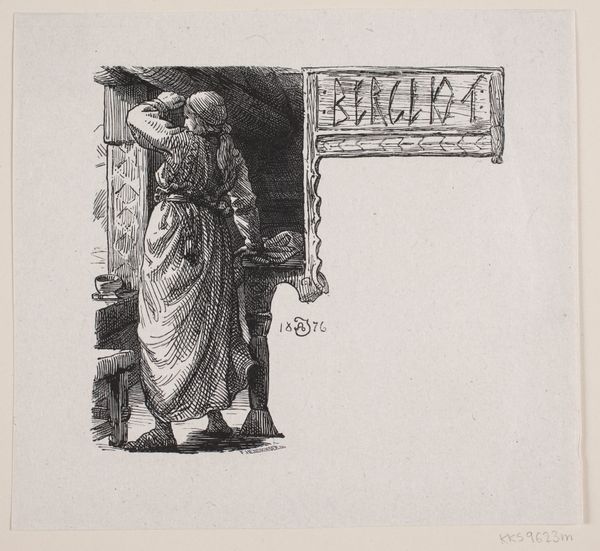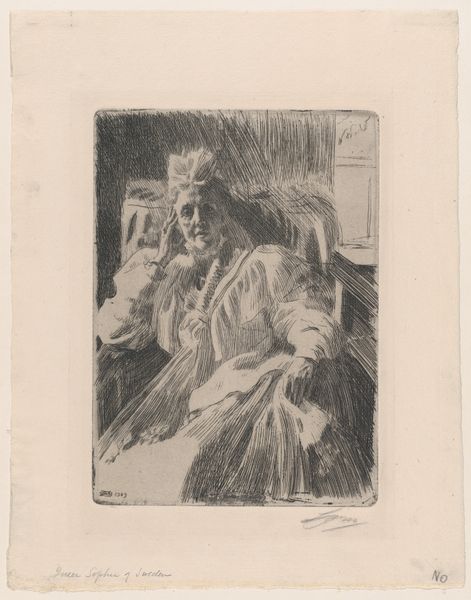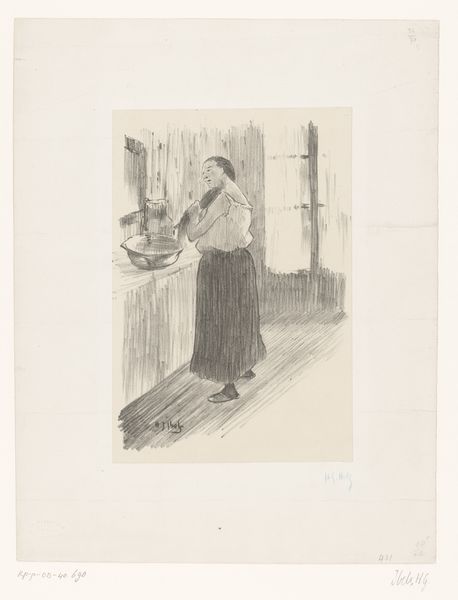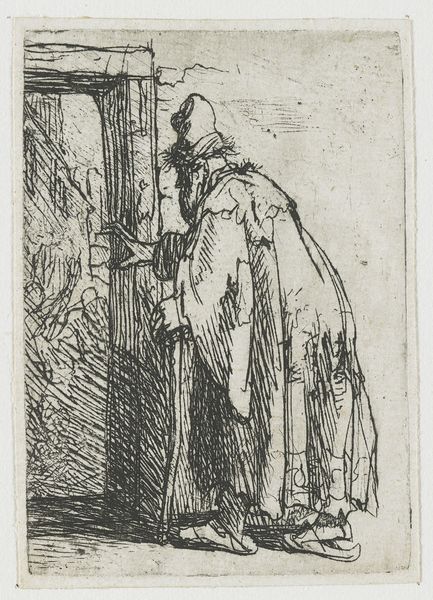
drawing, print, etching
#
portrait
#
drawing
# print
#
etching
#
genre-painting
#
realism
Dimensions: Sheet: 8 7/8 × 7 1/16 in. (22.5 × 18 cm) Plate: 4 1/8 × 3 5/8 in. (10.5 × 9.3 cm)
Copyright: Public Domain
Curator: This is "The Ironing Woman," an etching by Charles Jacque, created in 1843. Look closely at the lines; he really captured a moment of daily life. What are your immediate impressions? Editor: Well, the figure, seen from the back, immediately conveys a sense of weariness, perhaps even isolation. The heavy lines of the etching accentuate the weight of her labor and the grim setting, I assume she's an example of the exploitation and hardship endured by working-class women. Curator: It's fascinating how Jacque uses the etching technique to portray this subject. There is very little romanticization here; rather he provides raw realism. Note how her face is turned away, suggesting a detachment and a sense of routine. The iron, rendered vaguely on the ironing board in the midground, may be understood to act as the physical manifestation of social conditioning. What symbolic meaning might exist in her downcast form, in your opinion? Editor: The woman's stance suggests not only resignation, but resistance, however sublimated it might be, a form of everyday protest that challenges dominant narratives about female domesticity. The image underscores labor inequities by highlighting how society undervalues the women's work essential for household operation. Do you see symbols in the repetition and the implied heat of the task at hand? Curator: I appreciate that reading. Yes, her repetition implies more than simple domestic tasks—it’s also about continuity and preservation of heritage, a continuous ritual binding her to generations of women facing similar conditions. Ironing and maintaining material belongings were critical markers of familial stability and social identity, thus reflecting much more than mere servitude. Editor: I would like to explore that "servitude." Is it about stability, or the trap that perpetuates the endless cycle of oppression, leaving women in invisible labor roles within households dominated by men? Her closed figure communicates power dynamics within the working class, a visual criticism aimed at masculine paradigms. Curator: Perhaps it’s both. It could signify how identity can be created out of mundane routines under tough constraints, making art valuable in revealing such resilience and adaptation—but there is no straightforward judgment here. I think what we’re left with is this etching’s strength lies in its multiple layers of interpretation. Editor: Indeed. Ultimately, "The Ironing Woman" forces us to address critical questions regarding women, their work, class disparities, and representation in visual arts. Jacque’s masterpiece ensures that these issues remain part of our cultural conversations today.
Comments
No comments
Be the first to comment and join the conversation on the ultimate creative platform.
